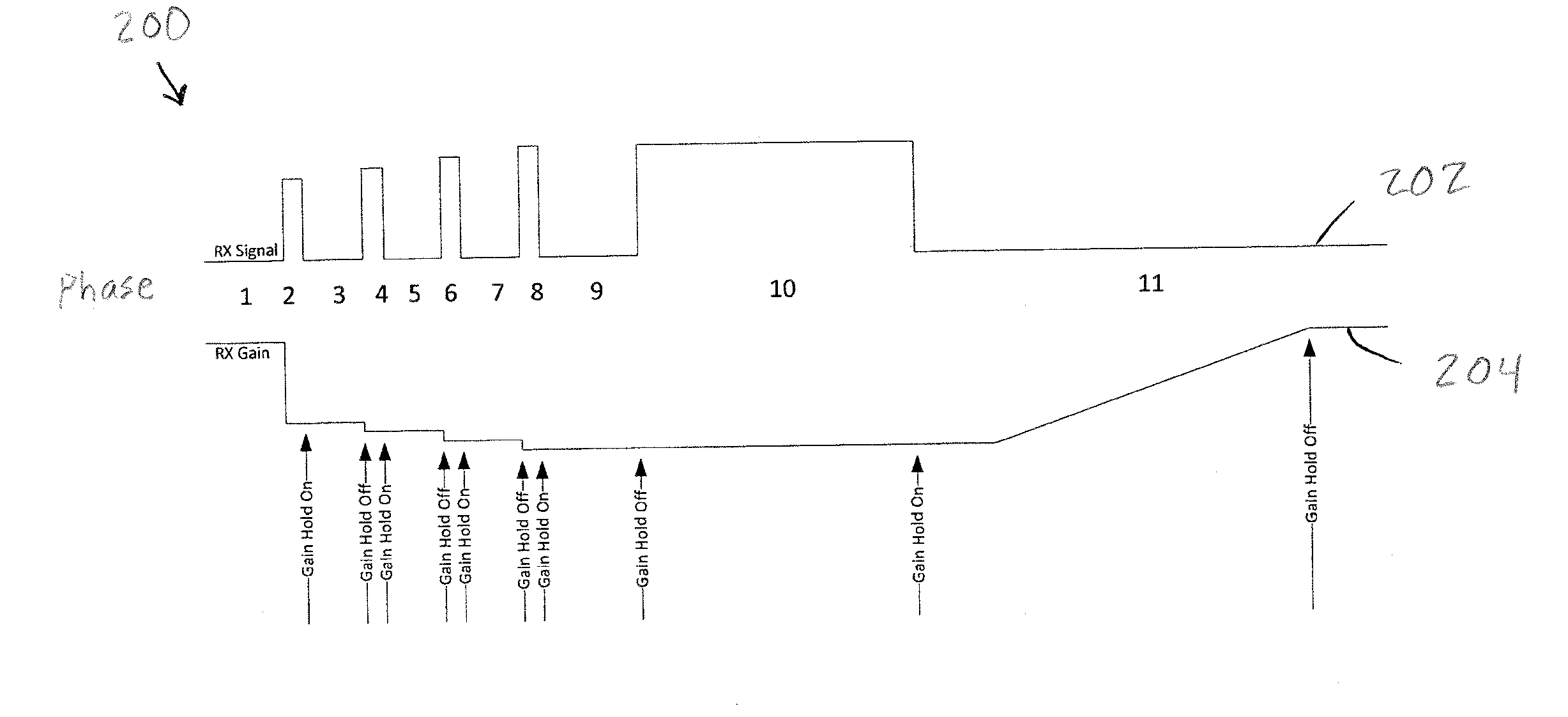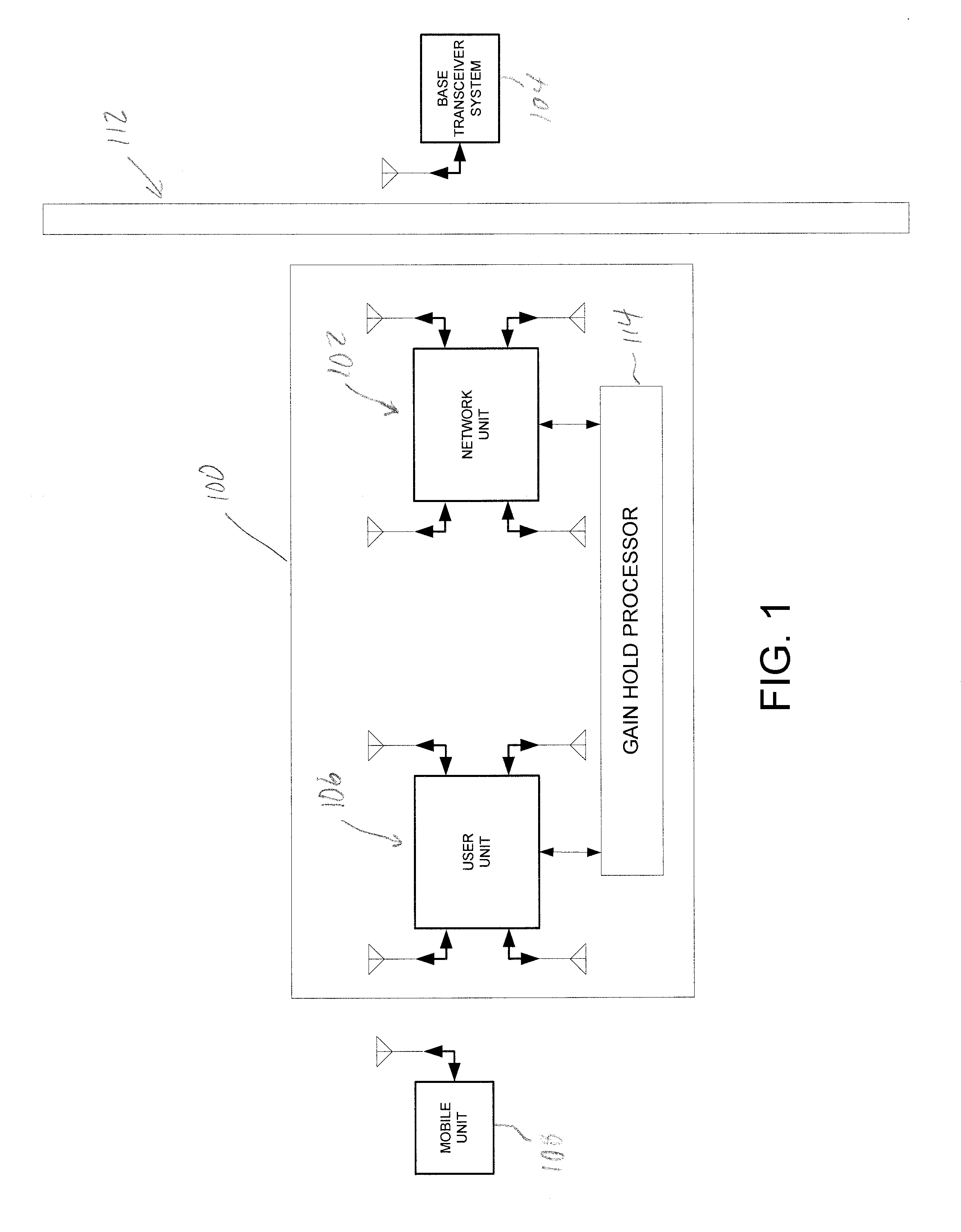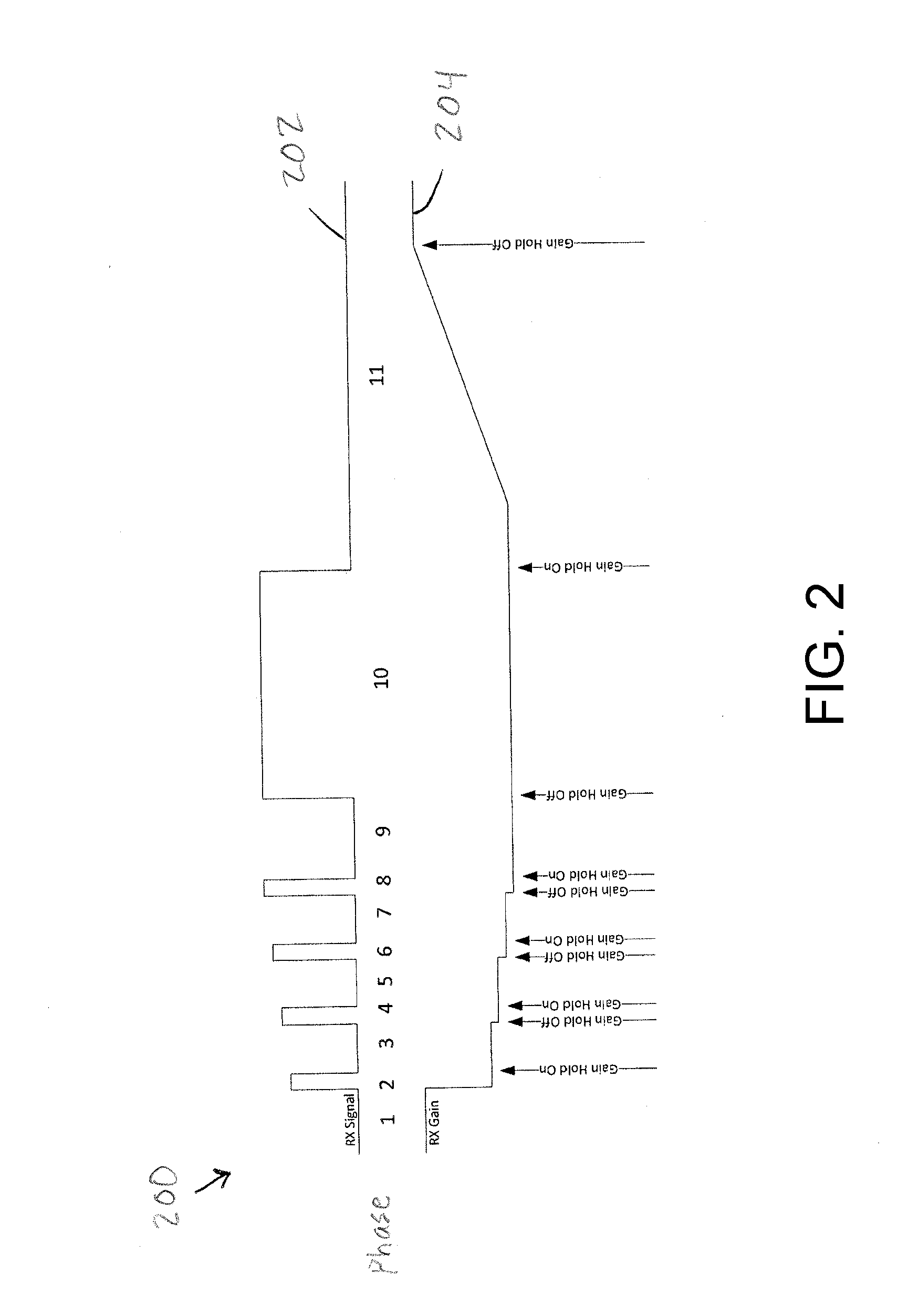System for Dynamically Controlling the Gain of a Repeater
a repeater and gain control technology, applied in the field of dynamic control of repeater gain, can solve the problems of reducing information bit energy (eb), poor coverage, reducing signal power, etc., and achieves the effects of reducing signal power, poor coverage, and large area coverag
- Summary
- Abstract
- Description
- Claims
- Application Information
AI Technical Summary
Benefits of technology
Problems solved by technology
Method used
Image
Examples
Embodiment Construction
[0015]FIG. 1 illustrates a cellular repeater 100 having a network 102 having a donor antenna adapted to communicate with one or more base transceiver systems 104 (or “base station”), and a user unit 106 having a server antenna adapted to communicate with a mobile unit 108. Examples of the mobile unit 108 include wireless communication devices such as a cellular phone, laptop computer, desktop computer, tablet computer, or personal digital assistant (PDA). Thus, the cellular repeater 100 is suited for an environment such as a home or building 112, to receive signals from the selected base station 104, boost, or add gain to, the signals, and send the boosted signals to the mobile unit 108, and back again from the mobile unit 108 to the selected base station 104.
[0016]The cellular repeater further includes a gain hold processor 114 that is configured for preempting large up-steps in signal power levels that follow large down-steps in signal power levels of signals received by the cellu...
PUM
 Login to View More
Login to View More Abstract
Description
Claims
Application Information
 Login to View More
Login to View More - R&D
- Intellectual Property
- Life Sciences
- Materials
- Tech Scout
- Unparalleled Data Quality
- Higher Quality Content
- 60% Fewer Hallucinations
Browse by: Latest US Patents, China's latest patents, Technical Efficacy Thesaurus, Application Domain, Technology Topic, Popular Technical Reports.
© 2025 PatSnap. All rights reserved.Legal|Privacy policy|Modern Slavery Act Transparency Statement|Sitemap|About US| Contact US: help@patsnap.com



